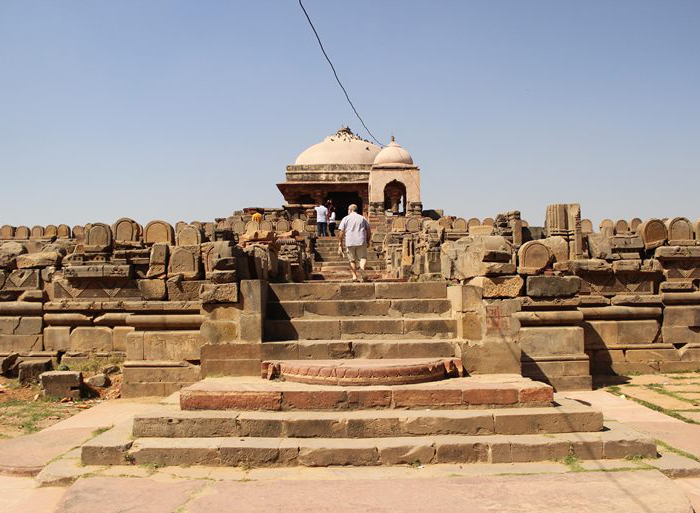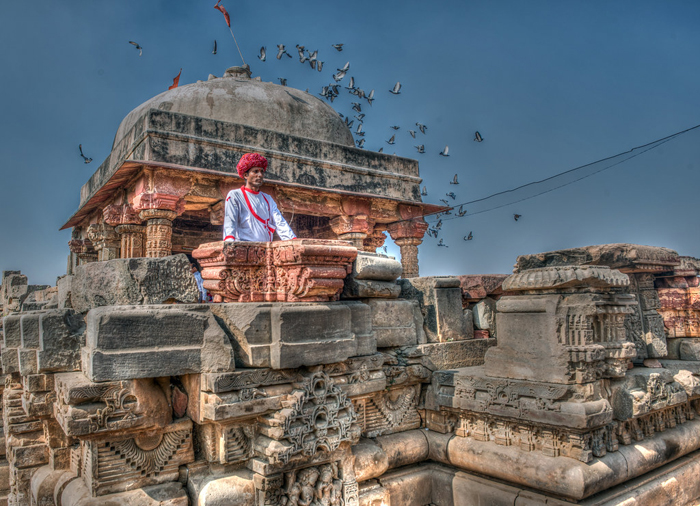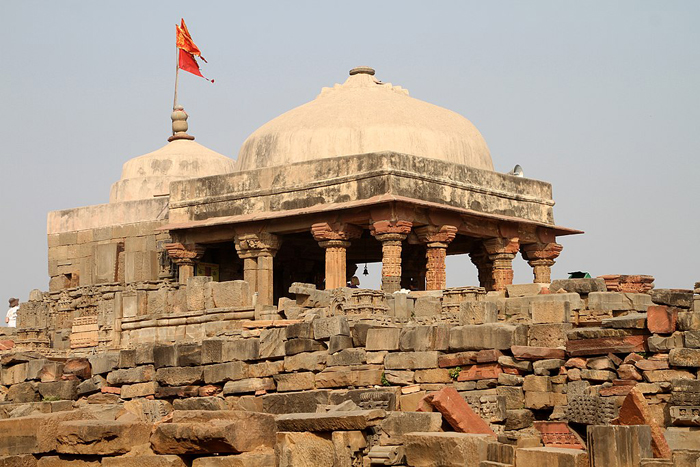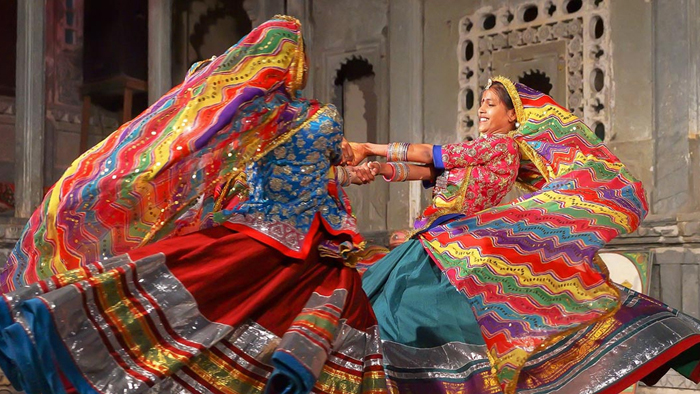Harshat Mata Temple - Oldest Hindu Temple in Abhaneri

The Harshat Mata Temple is a Hindu temple in the Abhaneri or Abaneri village Dausa district in Rajasthan. The temple is situated just near the Chand Baori, which is one of the largest and the most beautiful stepwells in the world. This temple was built by the king of Abhaneri with a unique form of architecture. The temple is dedicated to a goddess called Harshat Mata, although some art historians theorize that it was originally a Vaishnavite shrine.
HISTORY OF THE TEMPLE

The original Harshat Mata temple has been ruined and modified over several centuries. There is no epigraphic evidence survives regarding the temple's construction, but based on an analysis of its architectural and sculptural styles, historians believe that it was built in the early 9th century, shortly after the construction of the adjoining Chand Baori stepwell. The temple's original builder is unknown, but historians theorize that it may have been built by a Gurjara-Pratihara king, possibly in association with a local Chahamana vassal. The temple was ravaged by Muhammad Gazni when he invaded India during the 10th Century. The temple is now protected by the Archaeological Survey of India, but remains in religious use.
ARCHITECTURE OF THE TEMPLE

The original temple appears to have been built in the panchayatana style, which features a main shrine surrounded by four subsidiary shrines. Only parts of the main shrine now survive and they have been ruined and modified over several centuries, with the tall shikhara tower replaced by a roof-dome. Much of the platform survives, with fragments of carved stones from the original structure, but most of the sculptures have been removed to the museums in Amber and Jaipur.
The entrance to the temple faces east, towards the rising sun. The temple complex is built on two broad stepped terraces (jagati), which originally included a circumambulatory path, and are now partially ruined. The boundary of the lower terrace has a relatively plain set of foundation and base moldings (vedibandha), which have decorative patterns at the top. The ruins of two small shrines flank the entrance stairway. The upper terrace is far more decorated, but is largely destroyed, the only image that remains intact is of Narasimha flanked by warriors.
The four subsidiary shrines may have been located on the upper terrace. Frank Reitz, who believes that the main idol of the temple was always that of Durga, theorizes that the four subsidiary shrines were located to Surya (north-west corner), Ganesha (north-east corner), Karttikeya (south-east corner), and Lakshmi-Narayana or Uma-Maheshvara (south-west). Reitz's theory is based on an analysis of other contemporary and near-contemporary temples, as well as a study of various fragments found at the Chand Baori compound or housed at various museums.
SCULPTURE AND DECORATIVE MOTIFS
.jpg)
The original main shrine was much taller with a superstructure (shikhara) tower. However, the superstructure has been destroyed, and later rebuilt with a simple dome. The sculptures on the temple walls have largely been lost. The surviving sculptures include those of Vishnu, his vahana - the Garuda, Balarama, apsaras (celestial woman), a vyala (leogryph), Agni, a four-armed Shiva-like seated male, a male seated on makara (mythical sea creature), a kneeling male having his foot massaged by four female attendants, dancers and musician.
ABHANERI FESTIVAL BY RAJASTHAN TOURISM

The Rajasthan Tourism Department started the two- day Abhaneri Festival since 2008 which is held in October every year. The annual festival has gained quite a momentum in the past couple of years. The festival is held in the nearby village of Dausa and is visited by tourists from all over the world. The locals engage in a variety of Rajasthani folk performances like Ghoomar, Kalbeliya, Kachhi Ghodi, Langa, Raas leela and Bhawai. There are puppet shows and art & craft exhibitions held during the festival.
VISITING INFORMATION
Best Time to Visit Abhaneri
The best time to visit Harshat Mata Temple Abhaneri is between October to March when the weather is comparatively pleasant.
Harshat Mata Temple Timing
The opening timing is 6:00 am to 6:00 pm all day.
Harshat Mata Temple entry fees
No entry fees for this religious place.
HOW TO REACH HARSHAT MATA TEMPLE ABHANERI
Harshat Mata Temple is situated in Abhaneri village which is 95 kilometres from Jaipur the capital city of Rajasthan. The easiest way to reach Harshat Mata Temple Abhaneri hire a taxi from Jaipur. There are no direct buses that go towards Abhaneri from Jaipur. If someone is on a budget trip and wishes to reach the temple via public transport, the journey can be broken down into two folds. First from Jaipur to Sikandra and second from Sikandra to Abhaneri one may rent a jeep or cab, whichever is available.
-
Hotel near Harshat Mata Temple Abhaneri
-
Hotel near Harshat Mata Temple Abhaneri are :
- Hotel Jaipur Central (91.1 Km, 1hr 55min)
- Six Senses Fort (166 Km, 3hr 34min)
 EN
EN